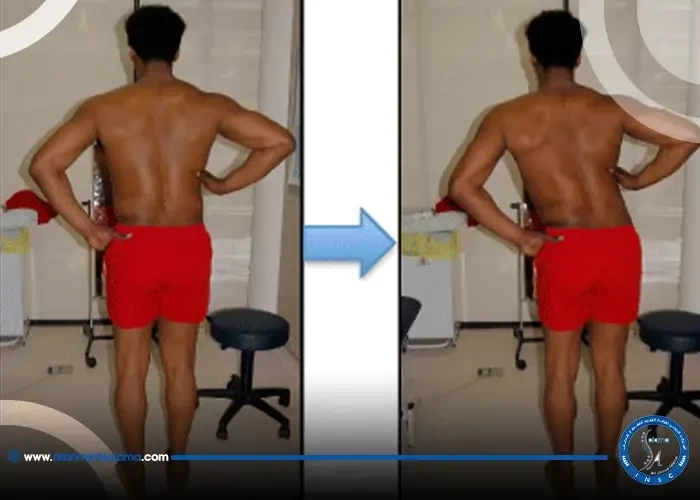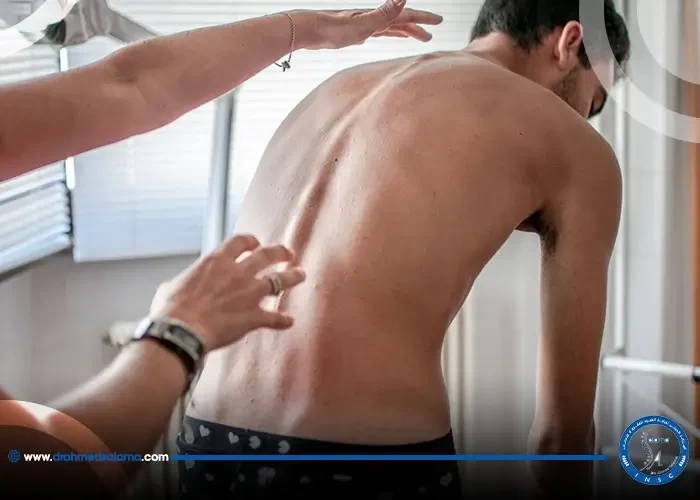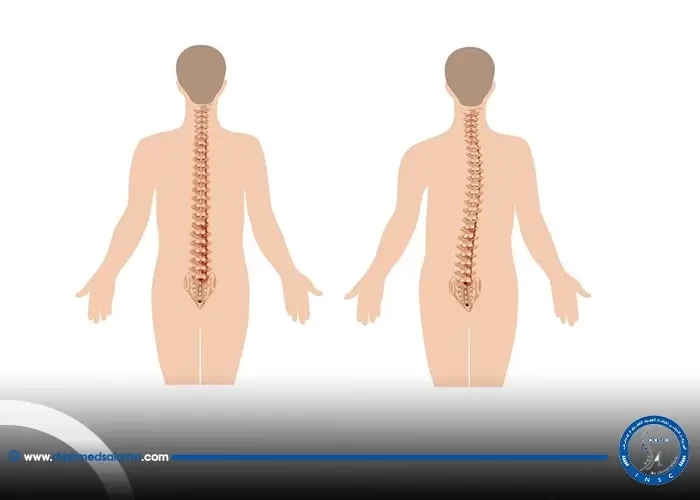Nasr City, 52 El Tayaran Street, in front of the Health Insurance Hospital

Causes of lower back pain

Lower back pain is one of the most common health problems affecting millions of people worldwide, often directly impacting mobility and quality of daily life. To effectively address this problem, we must first understand the exact causes of lower back pain. Knowing the underlying cause of this pain helps in choosing the most appropriate treatment to prevent the condition from worsening. In this article, we will discuss the most common causes of lower back pain, how this problem can impact your quality of daily life, and the available methods for diagnosis and treatment, with an emphasis on the importance of early diagnosis and appropriate treatment.
Causes of Lower Back Pain
Lower back pain is one of the most common medical complaints among adults, and it has many causes, ranging from simple to complex. It is important to understand the causes of lower back pain, as this helps determine the appropriate treatment and future prevention. Common causes of lower back pain include:
Muscle and ligament strain
Pain may be caused by repeated heavy lifting or sudden movements. This can lead to painful muscle strain, especially if you are in poor physical condition.
Disc Problems Between the Vertebral Columns
Discs act as cushions to absorb shock. Sometimes, they can bulge or rupture and compress nearby nerves, causing pain. This is a common cause of lower back pain.
Neuronal Canal Narrowing in the Lower Vertebral Columns
This can cause pressure on the nerves branching out from the spine, and may manifest as pain radiating to the legs and difficulty walking long distances.
Arthritis
Arthritis is one of the causes of lower back pain, as it can affect the vertebral joints in the lower back. In some cases, this inflammation can narrow the space around the spinal cord, compressing the nerves and causing persistent pain and difficulty moving.
Osteoporosis
When bones become weak, the vertebrae of the spine are susceptible to painful fractures.
Ankylosing Spondylitis
An inflammatory disease that can cause some vertebrae to fuse together, reducing the flexibility of the spine.
Structural Deformities
Such as scoliosis or kyphosis, these problems can lead to unbalanced pressure on the vertebrae and muscles.
Accidents and Collisions
Accidents and direct injuries to the back can cause damage to bones, ligaments, or soft tissues, resulting in severe and persistent pain.
Tumors
In rare cases, tumors in the back area may be the cause of persistent pain. They can compress nerves or surrounding tissues, causing chronic pain and requiring careful medical evaluation.
If you are suffering from lower back pain, do not hesitate to consult Dr. Ahmed Ibrahim Salama, a consultant neurosurgeon and spine surgeon, to learn the causes of lower back pain. He provides specialized medical consultations to accurately diagnose your condition and provide appropriate treatment to ensure your speedy recovery.
Symptoms Associated with Lower Back Pain
Each patient's experience may vary depending on the underlying cause of the pain. However, there are a number of common symptoms that accompany lower back pain and sometimes indicate a problem that requires medical evaluation:
Stiffness and difficulty moving, especially when waking up in the morning or after sitting for long periods.
Pain extending to the legs or buttocks, known as sciatica, is often the result of a herniated disc pressing on a nerve.
Numbness or tingling in the lower extremities indicates nerve damage or poor nerve blood flow.
Weak muscle strength, which may make it difficult to carry objects or walk long distances.
Pain worsens with movement, such as bending forward, lifting weights, or even coughing and sneezing.
Persistent pain that does not improve with rest may be an indication of more serious problems, such as spinal stenosis or inflammation of the vertebrae.
The various causes of lower back pain do not necessarily lead to all of these symptoms. Each case has its own symptoms and severity, which vary from patient to patient. Therefore, it is essential to consult Dr. Ahmed Ibrahim Salama, a consultant neurosurgeon and spine surgeon, when any worrisome symptoms appear, to accurately determine the cause and begin appropriate treatment.
What is a herniated disc (slipped disc) and its symptoms?
After exploring the causes of lower back pain, we find that one of the most common causes is a herniated disc. When discussing what a herniated disc is, we find that it is a health problem that occurs when the soft inner part of the intervertebral disc, which acts as a cushion between the vertebrae, shifts out of its normal position, putting pressure on nearby nerves and leading to severe pain. The most prominent symptoms of a herniated disc include:
Lower back pain that worsens with movement or bending.
Pain extending to the legs or buttocks (sciatica).
Numbness or tingling in the leg or foot.
Muscle weakness and difficulty walking or lifting objects.
Pain increases when coughing or sneezing.
Restricted movement and difficulty bending or sitting for long periods.
In severe cases: loss of control of urination or bowel movements (emergency).
If you suffer from disc symptoms, especially chronic or recurring pain in the lower back, and find it difficult to perform your daily activities normally, it is important not to ignore the symptoms. You can consult Dr. Ahmed Ibrahim Salama, a consultant neurosurgeon and spine surgeon, to obtain an accurate diagnosis and determine the causes of your lower back pain. He will then develop the most appropriate treatment plan for your condition, whether conservative treatment or advanced surgical intervention, if necessary.
Back Pain Treatment
Back pain treatment varies from person to person depending on the cause and severity of symptoms. The specialist physician will determine the most appropriate treatment plan after examination and diagnosis. The most common treatment methods include:
Avoid strenuous activities, such as lifting heavy weights, to reduce pressure on the back.
Medications, such as acetaminophen or nonsteroidal anti-inflammatory drugs, to relieve pain.
Ice or heat packs, to reduce pain and inflammation, especially in the first few days of the injury.
Massage and acupuncture, may provide temporary relief.
Manual therapy, to help with exercise.
Physiotherapy, to strengthen the back and prevent recurrence of pain after the acute pain subsides.
Steroid injections: For pain relief in chronic conditions.
Radiofrequency: A modern and safe technique used to treat chronic back pain by directing precise heat waves to the nerves causing pain, reducing nerve signals and providing prolonged relief without the need for surgery.
Surgery: Recommended for cases of large herniated discs, stenosis of the spinal canal, or severe nerve impairment. These procedures include microdiscectomy, vertebral stabilization, or 3D deformity repair techniques.
After confirming the diagnosis and determining the cause of lower back pain, Dr. Ahmed Ibrahim Salama, a consultant neurosurgeon and spine surgeon, begins to determine the appropriate treatment plan for your condition.
When should you see Dr. Ahmed Ibrahim Salama?
Back pain often improves with home treatment and self-care within a few weeks. However, there are warning signs that warrant an immediate visit to the doctor, including:
The pain persists for a long time without improvement.
When the pain is severe and does not relieve with rest.
Pain extending to the legs with numbness or tingling.
If the pain is accompanied by weakness, numbness, or tingling in one or both legs.
If the pain is accompanied by unexplained weight loss.
If the pain is accompanied by new problems controlling urination or bowel movements.
If the pain is accompanied by a fever.
The pain occurs after a fall or back injury.
Tips for Maintaining Back Health
Prevention is always better than cure, especially when it comes to back pain, which can affect your quality of life. Following some simple healthy habits helps protect your spine and reduce the risk of developing pain. The most important of these tips are:
Maintain regular physical activity to strengthen your back muscles.
Focus on abdominal and back muscle exercises to support your spine.
Avoid gaining weight to relieve pressure on your back.
Stop smoking, as it increases your risk of lower back pain.
Keep your back straight and balance your pelvis.
Use a chair with support for your lower back and change your position regularly.
Rely on the strength of your legs when lifting and keep your back straight.
Use appropriate medical mattresses and pillows while sleeping.
Dr. Ahmed Ibrahim Salama: Advanced Expertise in Back Pain Treatment
Dr. Ahmed Ibrahim Salama is a consultant neurosurgeon and spine surgeon, and is considered a leading expert in diagnosing and treating lower back pain using the latest technologies. He provides comprehensive patient care, relying on accurate diagnosis and effective treatment to achieve the best results.
Dr. Ahmed Ibrahim Salama's strengths include:
A pioneer in the application of 3D reconstruction technology for spinal deformities.
He holds a PhD in neurosurgery and spine surgery from Zagazig University.
A consultant spine surgeon for children and adults.
A member of the American Spinal Deformity Society and several international specialized societies.
He is known for his excellent communication with patients and his understanding of their needs.
He provides comprehensive care starting with an accurate diagnosis using the latest equipment and technologies.
He develops a comprehensive treatment plan for each case with close follow-up to ensure the best results.
He uses radiofrequency ablation and other modern techniques to treat lower back pain.
Ultimately, lower back pain is a common health problem that affects many people. In order to effectively treat this pain, it is essential to first accurately identify the causes of lower back pain. Diagnosing the underlying cause helps determine the appropriate treatment and reduce its impact on your quality of daily life. Therefore, if you are suffering from lower back pain, do not hesitate to consult Dr. Ahmed Ibrahim Salama to ensure an accurate diagnosis and treatment tailored to your condition.
How do I know if my back pain is serious?
If your back pain is accompanied by symptoms such as loss of bladder or bowel control, sudden weakness in the legs, or severe pain that does not improve with rest, this may be an indication of a serious medical condition that requires immediate medical attention.
What are the causes of lower back pain?
The causes of lower back pain may be due to muscle strain, prolonged incorrect sitting, a herniated disc, spondylosis, narrowing of the spinal canal, spinal deformities, and sometimes osteoporosis or inflammation of the vertebrae.






